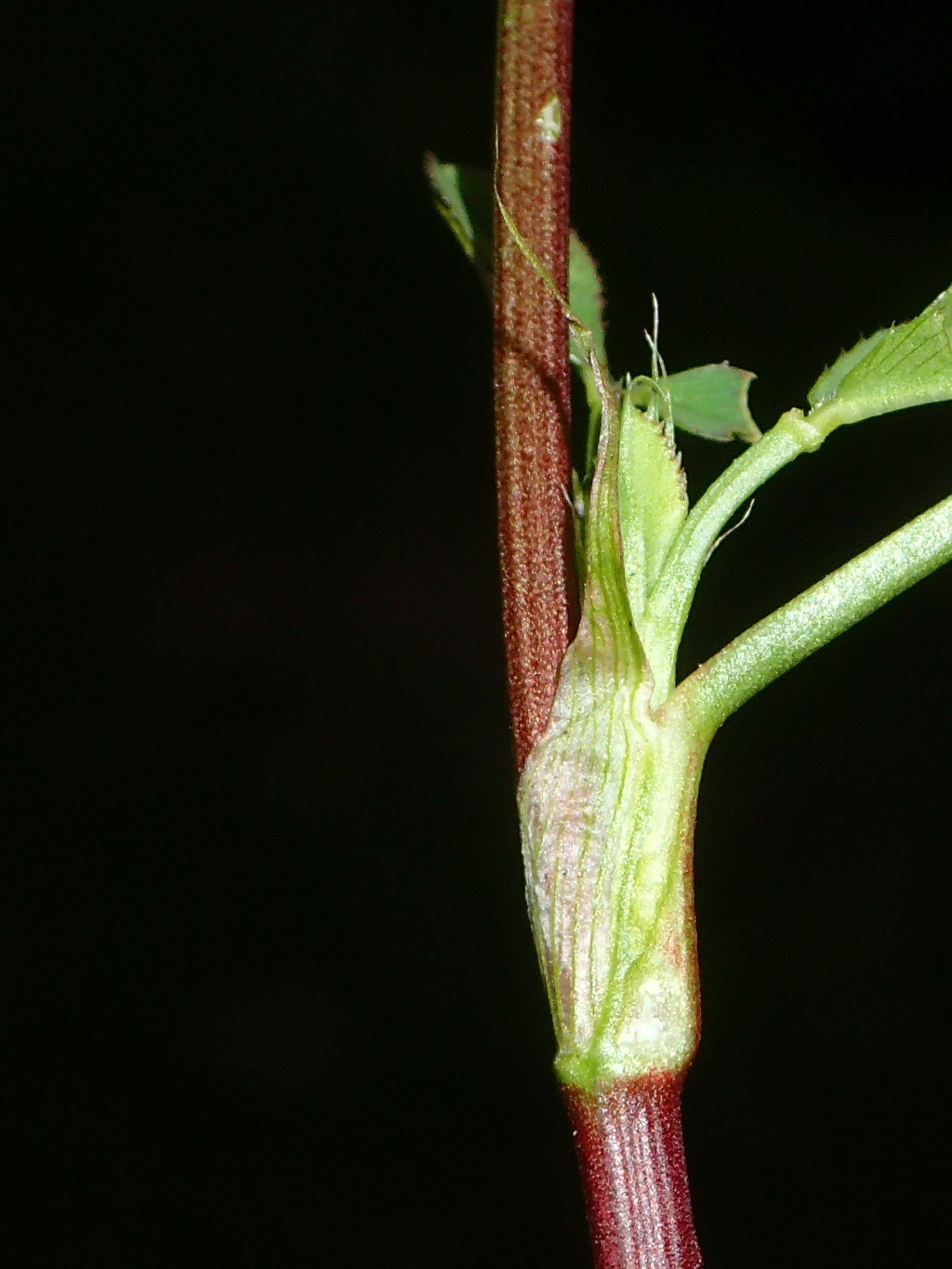Trifolium vesiculosum var. vesiculosum
Arrowleaf CloverUpright annual herb; stems 15–40 cm long, simple or branched, glabrous, angled, often reddish. Leaves palmately trifoliolate, short- to long-petiolate; leaflets lanceolate, 15–40 mm long, 5–15 mm wide, glabrous, acutely serrate-dentate, usually apiculate, prominently veined below, often with a pale arrow-shaped spot above; stipules scarious, prominently nerved. Inflorescence many-flowered, appearing terminal, solitary, initially broadly conical, finally obloid to ovoid-cylindric, 3–6 cm long, 2.5–3.5 cm wide, subsessile to pedunculate; flowers sessile. Calyx 6–7 mm long, tube cylindric, 20–30-veined, throat open, teeth about as long as tube, almost equal, spiny, reflexed in fruit; corolla 12–15 mm long, pale pink to purple, persistent; standard lanceolate, claw broad, tapering; keel and wings much shorter than standard. Pod obloid, c. 4 mm long, scarious, included in calyx tube; seeds 2–3, more or less ovoid, c. 1.2 mm long, brown. Flowers spring-early summer.
LoM, Wim, VVP, RobP, GipP, DunT, HSF. Also naturalised SA. Only recently (1993) recorded for Victoria, as an infestation covering some 40 hectares on private land and roadside verge in the Little Desert area, with a subsequent record in remnant roadside grassland near Mount Mercer. Possibly intentionally cultivated in the past for seed or as green manure.
Zohary & Heller (1984) recognize 2 varieties of which only the type variety has been recorded for Victoria; var. rumelicum Griseb. differs in having a less inflated fruiting calyx with less prominent transverse veins.
 Spinning
Spinning
